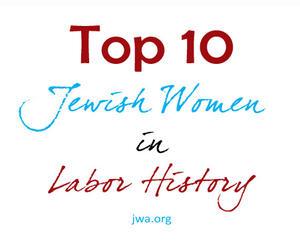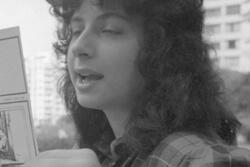10 Things You Should Know About Bessie Abramowitz Hillman
-
Born in 1889, Bessie Abramowitz Hillman grew up in the Russian empire, in the city of Grodno, now part of Belarus. When she was 15, she immigrated to America “to escape a marriage broker,” she later said. She settled in Chicago, where she had distant relatives. She was soon involved in the fight for better wages and working conditions.
-
When she organized a shop committee to protest, she was promptly fired. Blacklisted in the industry, she took an assumed name to get a job making men’s apparel in a factory owned by Hart, Shaffner, and Marx. When the bosses cut a quarter of a cent from the four-cent piece rate for sewing buttons on pants, she and 16 other young women walked out in protest.
-
Within a few weeks, that tiny band had been joined by 8,000 other Hart, Shaffner, and Marx workers; soon thousands at other plants were also on the picket line. Jane Addams and the Women’s Trade Union League (WTUL) backed the strike, and the WTUL hired Bessie as a paid organizer.
-
The strike led to a romance between Bessie and Sidney Hillman, a Lithuanian immigrant who worked as a cutter in the factory. Both had families back in Europe depending on them for financial support, so when they became engaged in 1914, they kept it a secret.
-
Later that year, Bessie and Sidney were among the garment workers in Chicago, New York, and other clothing centers who left the conservative United Garment Workers to form the Amalgamated Clothing Workers of America. She was elected to the general executive board, and he became president of the new union.
-
The couple made their engagement public in 1916 at the Chicago May Day parade by walking, arm-in-arm, at the head of the clothing workers’ contingent. They were married on May 3, 1916, and moved to New York City to begin their work with the Amalgamated Clothing Workers’ Union. From that time until the death of her husband in 1946, Bessie worked long hours without pay for the union even when she was caring for her two young daughters.
-
By 1937 Bessie was the education director of the Laundry Workers Joint Board (part of the Amalgamated Clothing Workers Union), emphasizing cultural programs and leadership education. She arranged for performances by entertainers such as Zero Mostel and Judy Holliday and stood by artists when some were blacklisted for political reasons.
-
The Laundry Workers had many nonwhite members. Bessie Hillman, with her strong Yiddish accent, was an early and strong advocate for the Civil Rights Movement. Her commitment to the civil rights cause lasted for the rest of her long life.
-
The Hillmans strongly identified as Jews, even speaking Yiddish at home, but they gave their daughters no religious training and observed Jewish holidays as family celebrations. Although Sidney Hillman became a close friend of Rabbi Stephen Wise, the noted Zionist and leader of Reform Judaism, he looked to the rabbi for guidance on moral and political, not religious, issues. The Hillmans did whatever they could to resist the Nazi campaign; several of Bessie’s siblings perished in the Holocaust.
-
Sidney Hillman believed union officers should have the same standard of living as their members. When he died in 1946, Bessie returned to paid work for the first time in 30 years. The Amalgamated hired her as a vice president and put her in charge of the union’s education programs. She spoke at conferences, helped organize summer courses, and was deeply involved in the union’s annual conventions. For the next 35 years, she continued urging her union and others to take an active part in the fight for peace, civil rights, and economic justice.







